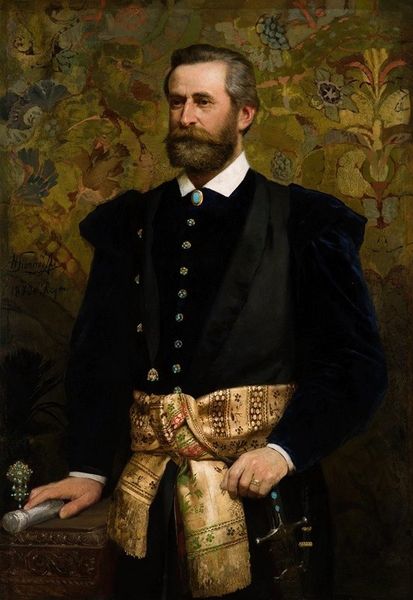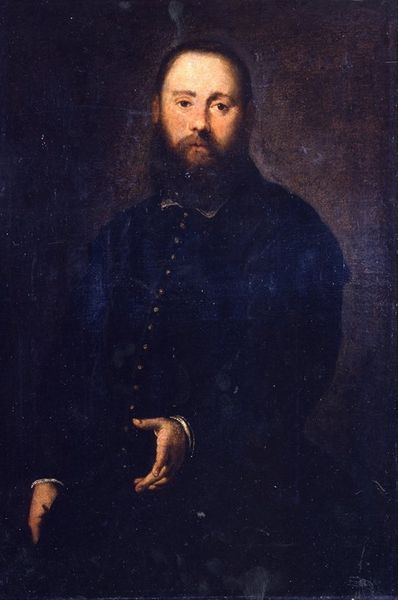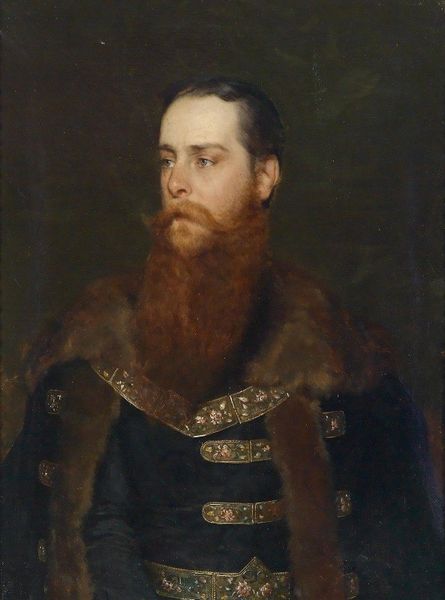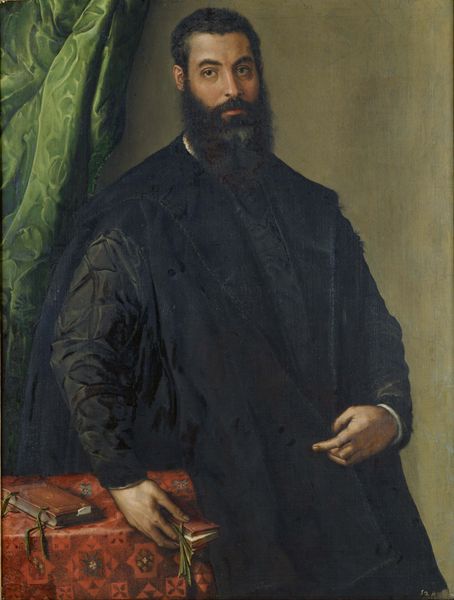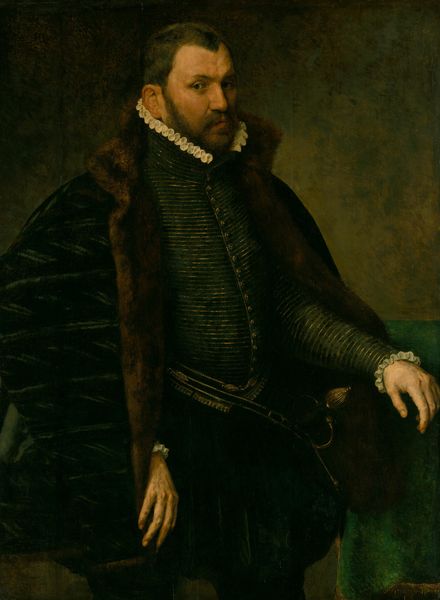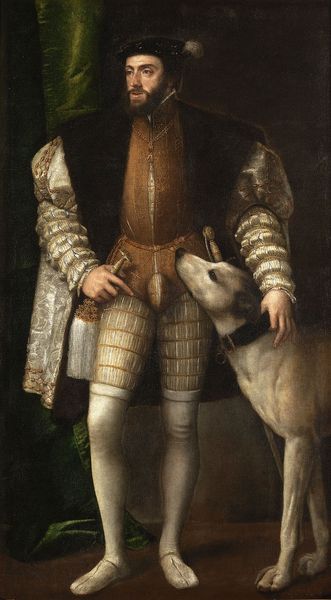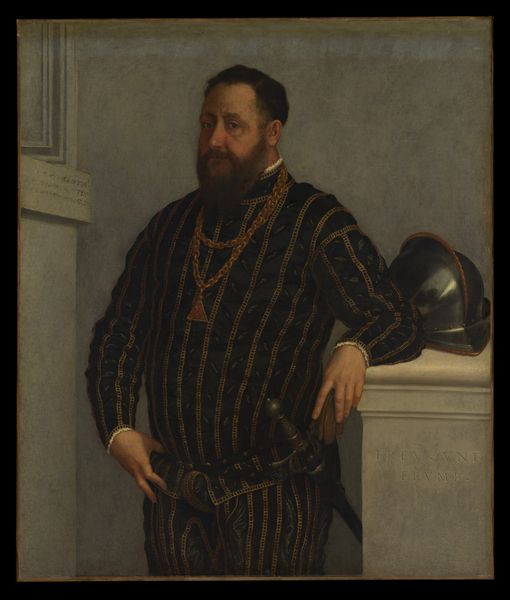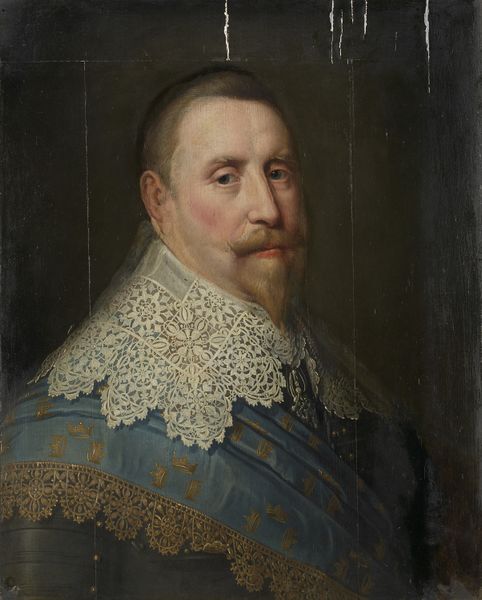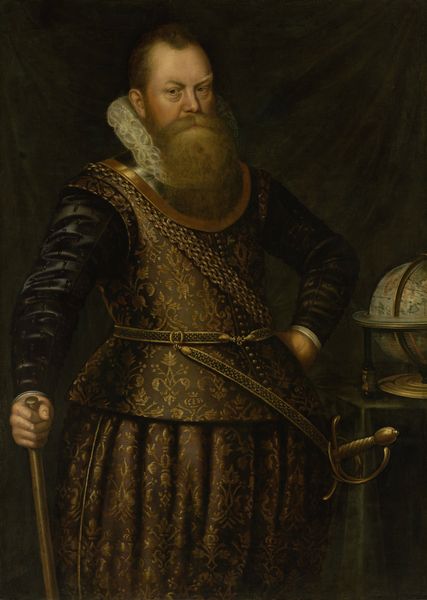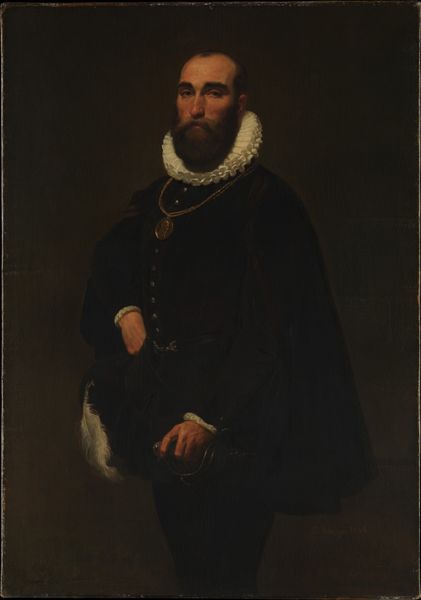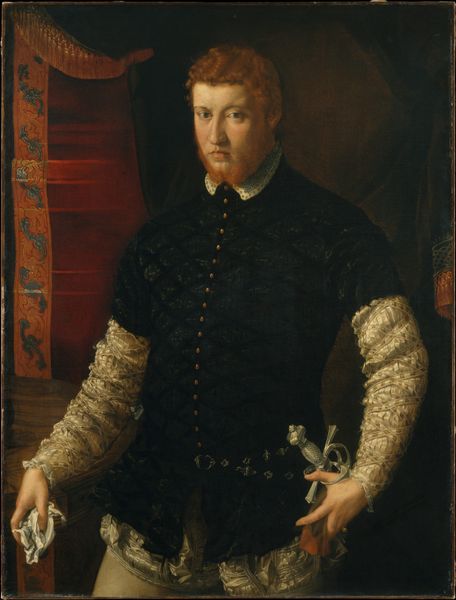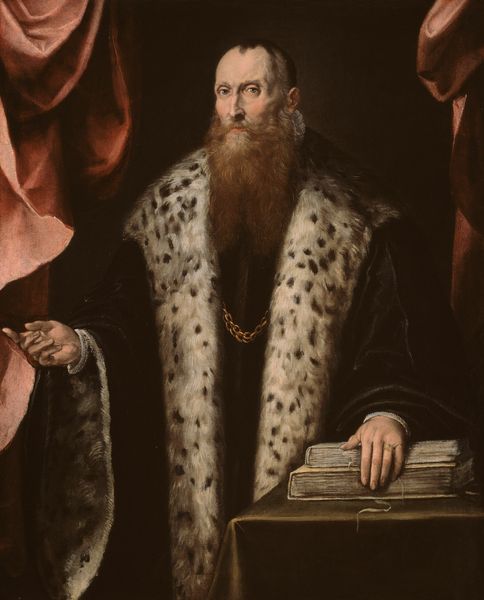
painting, oil-paint
#
portrait
#
painting
#
oil-paint
#
11_renaissance
#
genre-painting
#
italian-renaissance
Dimensions: 125 x 99 cm
Copyright: Public domain
Curator: Here we have Titian's "Portrait of Federico II Gonzaga," painted around 1525, and currently housed in the Museo del Prado. Editor: It's striking, immediately commanding. The texture of the blue velvet almost seems tactile, contrasted against the softness of the dog’s fur. You get a strong sense of the luxurious materials at play here. Curator: The opulence certainly speaks volumes. Titian, and indeed Venetian painting of this era, were incredibly invested in conveying status through fabric and ornamentation, right down to the metal hilt on his sword. Federico is essentially communicating power through crafted materials. Editor: Precisely! It's about visible consumption, the explicit display of wealth translated into a political language. Look at the detail in the gold embroidery trimming, it is stunning. What symbolism do you find embedded within, beyond simple power displays? Curator: The dog is a traditional symbol of loyalty, of course. It can also signify domesticity or a softer side. However, I am curious about the dog breed itself; perhaps Titian carefully chose it because of specific symbolic or even heraldic links relevant to Gonzaga's court. Editor: Possibly, though considering artistic license, and the process of acquiring certain dog breeds, wouldn’t we expect an element of chance in what Federico acquired as a patron? Consider the actual act of patronage itself, a carefully curated consumption, influencing production. Curator: It’s an interesting counterpoint – yes, it pushes us to remember that the very creation of these images relies upon networks of labor and availability of materials and how artists adapted, maybe beyond symbolic intentions. I will keep a keen eye out the next time I'm at the Prado! Editor: A fine summation, considering what that single canvas yields, from the psychological depths of Federico's character to the vibrant market realities that allowed this art to emerge.
Comments
No comments
Be the first to comment and join the conversation on the ultimate creative platform.
